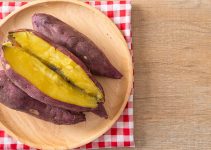Lobster Newberg is a decadent seafood dish that epitomizes the opulence of New York’s Gilded Age. First created in the 1870s at Delmonico’s, one of New York’s most famous restaurants, this dish combines succulent lobster with a rich, creamy sauce, spiked with sherry and brandy. This article delves into the history and preparation techniques of Lobster Newberg, offering insights into recreating this classic at home.
Contents
Selecting Ingredients for Authenticity and Flavor

The success of Lobster Newberg hinges on the quality of its ingredients:
- Lobster: Fresh, live lobsters are ideal for this dish. Choose lobsters that are active in their tank, which indicates freshness.
- Cream: Heavy cream provides the velvety base of the sauce. For the best results, use full-fat cream to achieve the right texture and richness.
- Liquor: A combination of dry sherry and brandy is traditional. These spirits add depth and complexity to the sauce.
- Eggs: Egg yolks are used to thicken the sauce, lending it a custard-like consistency that clings beautifully to the lobster.
Preparation of Lobster
- Cooking the Lobster: Begin by boiling the lobsters in a large pot of salted water for about 8-12 minutes, depending on their size, until they are bright red and fully cooked.
- Extracting the Meat: Once cooled, remove the meat from the claws, tail, and body. Keep the meat in large chunks to maintain the luxurious feel of the dish.
- Reserve the Shells: Optionally, lobster shells can be used to make a stock that adds even more flavor to the sauce.
Creating the Signature Newberg Sauce
- Tempering the Egg Yolks: In a bowl, whisk the egg yolks with a bit of heavy cream. This step is crucial to ensure the yolks do not curdle when added to the hot mixture.
- Cooking the Sauce: In a saucepan, gently heat more cream, then slowly incorporate the tempered egg yolks, stirring continuously. Add a splash of dry sherry and brandy, and continue to cook on low heat until the sauce thickens slightly. Season with a pinch of cayenne pepper and nutmeg for an added layer of flavor.
- Combining with Lobster: Add the cooked lobster meat to the sauce, warming it gently. Be careful not to let the mixture boil, as high heat can cause the sauce to curdle.
Serving Lobster Newberg
Lobster Newberg is traditionally served over buttered toast points or puff pastry shells, which complement the richness of the creamy sauce. The dish should be plated with care to showcase the elegance of the lobster chunks and the silky texture of the sauce.
Garnish and Presentation
Garnish with a sprinkle of fresh parsley or a light dusting of paprika to add color and a subtle hint of flavor that doesn’t overpower the main ingredients. Lobster Newberg can be served as a luxurious starter or as a main course for a special occasion dinner.
Conclusion: Reviving a Culinary Classic
Lobster Newberg is more than just a seafood dish; it’s a piece of New York’s culinary history that brings the luxury of a bygone era to your table. Mastering this dish involves careful attention to the quality of ingredients and precision in cooking techniques. Whether for a festive celebration or a quiet, elegant dinner, Lobster Newberg offers a nanastoto unique opportunity to savor a rich, historical recipe that continues to captivate the palates of seafood lovers across the world.



